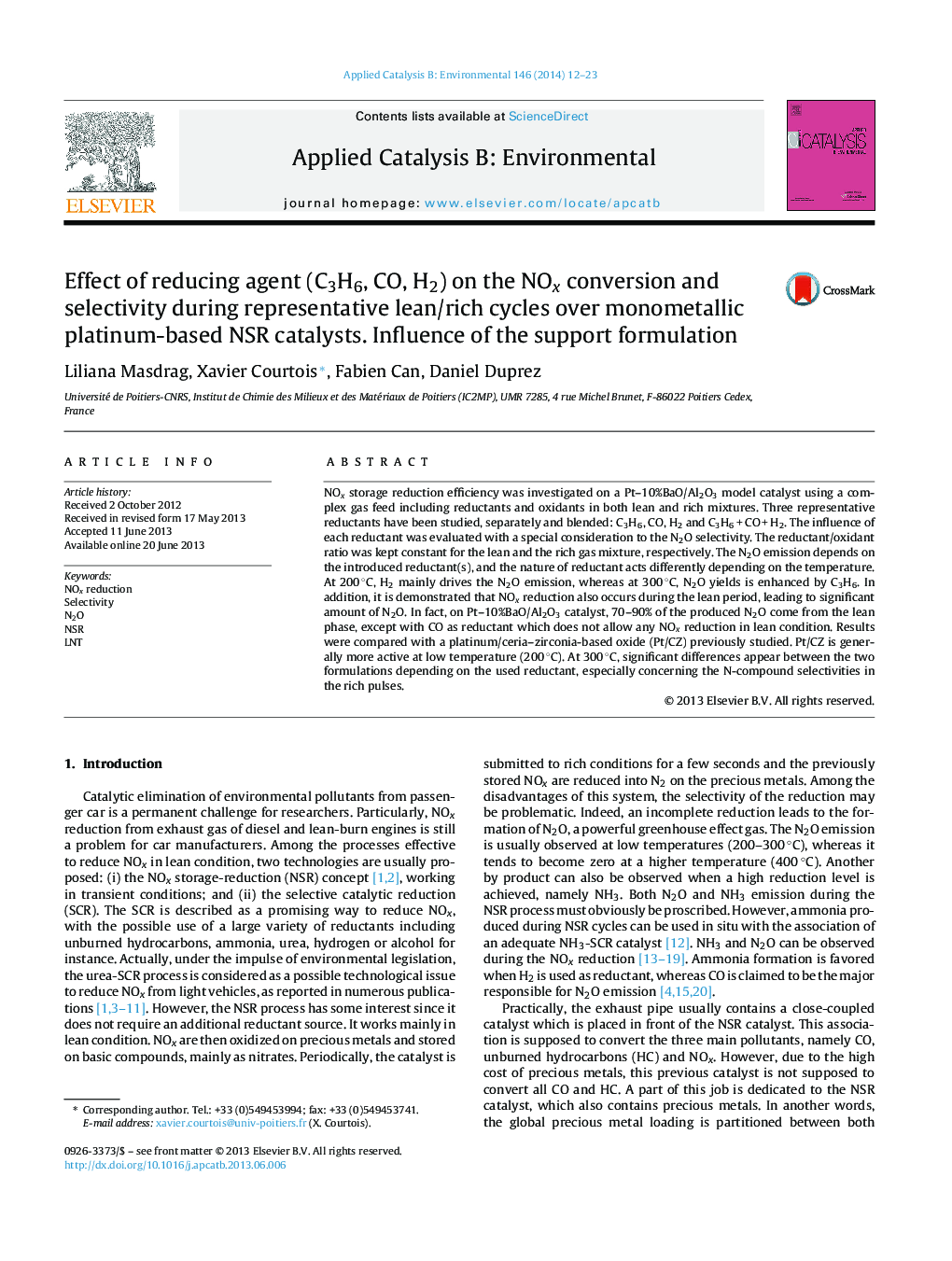| کد مقاله | کد نشریه | سال انتشار | مقاله انگلیسی | نسخه تمام متن |
|---|---|---|---|---|
| 45178 | 46405 | 2014 | 12 صفحه PDF | دانلود رایگان |

• DeNOx efficiency/selectivities were evaluated in a complex and realistic feed gas.
• N2O yields depend on both the temperature and the chemical nature of reducer.
• Reducers in lean NOx storage mixture strongly participate to the N2O emissions.
• No effect of the support formulation is observed on the lean DeNOx chemistry.
• Supports redox behaviors interfere on reducers transformation during rich phases.
NOx storage reduction efficiency was investigated on a Pt–10%BaO/Al2O3 model catalyst using a complex gas feed including reductants and oxidants in both lean and rich mixtures. Three representative reductants have been studied, separately and blended: C3H6, CO, H2 and C3H6 + CO + H2. The influence of each reductant was evaluated with a special consideration to the N2O selectivity. The reductant/oxidant ratio was kept constant for the lean and the rich gas mixture, respectively. The N2O emission depends on the introduced reductant(s), and the nature of reductant acts differently depending on the temperature. At 200 °C, H2 mainly drives the N2O emission, whereas at 300 °C, N2O yields is enhanced by C3H6. In addition, it is demonstrated that NOx reduction also occurs during the lean period, leading to significant amount of N2O. In fact, on Pt–10%BaO/Al2O3 catalyst, 70–90% of the produced N2O come from the lean phase, except with CO as reductant which does not allow any NOx reduction in lean condition. Results were compared with a platinum/ceria–zirconia-based oxide (Pt/CZ) previously studied. Pt/CZ is generally more active at low temperature (200 °C). At 300 °C, significant differences appear between the two formulations depending on the used reductant, especially concerning the N-compound selectivities in the rich pulses.
Figure optionsDownload as PowerPoint slide
Journal: Applied Catalysis B: Environmental - Volume 146, March 2014, Pages 12–23